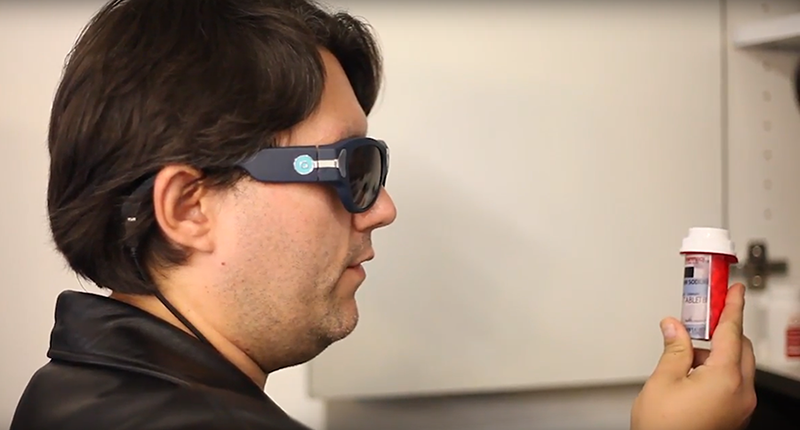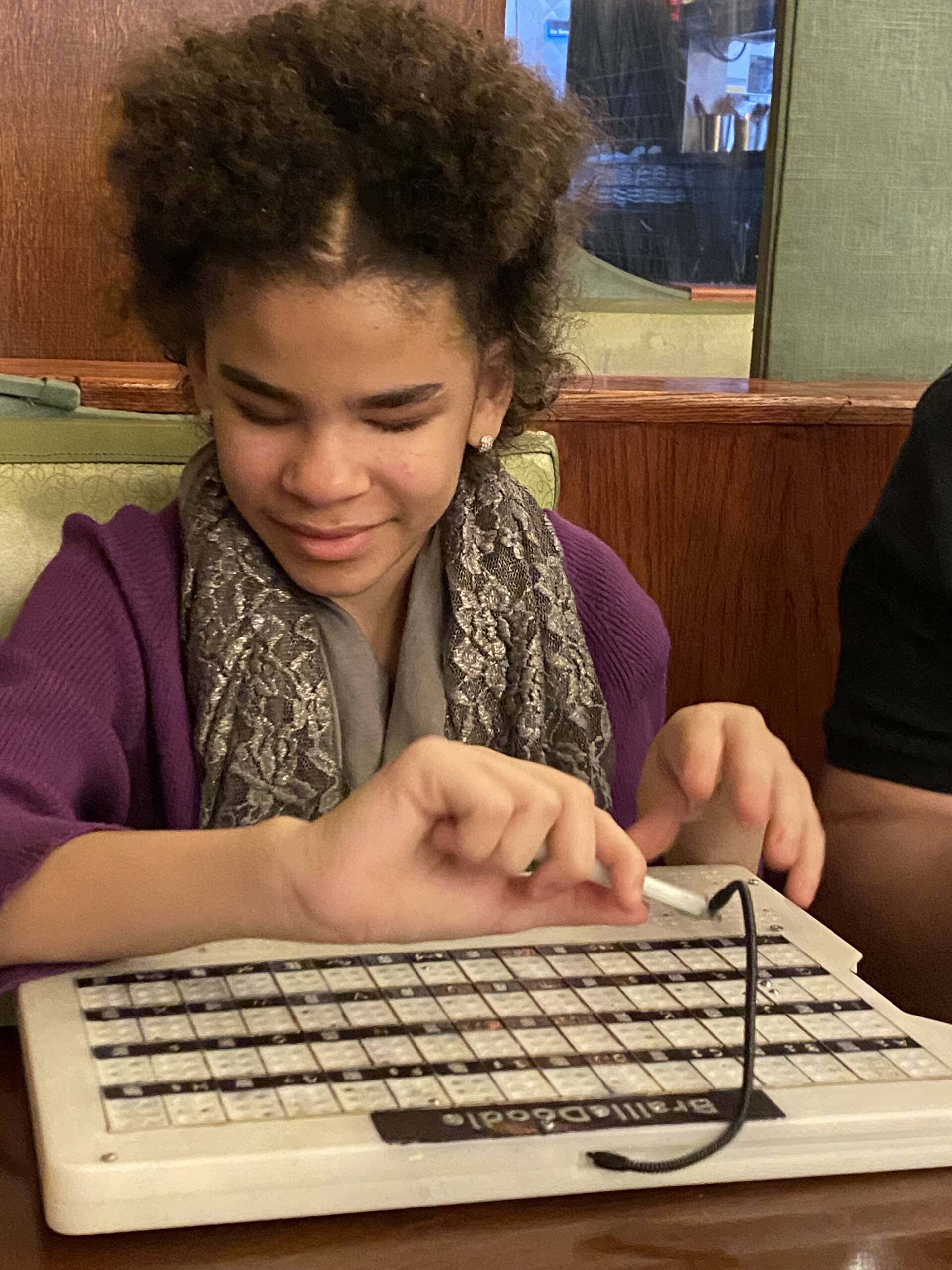Empowering Freedom With Assistive Innovation for the Blind
The integration of assistive technology right into the lives of individuals with visual problems represents a significant innovation in advertising self-reliance and self-sufficiency. From innovative display readers to sophisticated clever walking canes, these devices not just boost daily navigation and interaction however also empower users to engage meaningfully in various facets of life. As we discover the myriad benefits and real-world applications of these modern technologies, it comes to be important to take a look at the hidden aspects that add to their effectiveness and the capacity for future growths in this vital area.
Overview of Assistive Innovation

The development of assistive modern technology is based in principles of inclusivity and empowerment. Developments in software program, hardware, and sensory enhancements provide users with choices tailored to their specific demands. From screen viewers that transform message to speech, to tactile tools that communicate info through touch, these devices transform the means people involve with their surroundings.
In addition to functional applications, assistive technology cultivates better social addition and involvement in different industries, including education and employment (AI-powered visual aids). As r & d proceed to progress, the potential for assistive innovation to better boost the lives of visually damaged people remains appealing, leading the way for a more fair culture where everyone can thrive
Kinds Of Assistive Instruments
A range of assistive devices have actually emerged to sustain individuals with visual disabilities, each designed to meet certain demands and boost everyday functioning. These tools range from low-tech solutions to sophisticated innovations, giving diverse options for individuals.
Low-tech tools include magnifiers and large-print products that help in analysis and writing. Braille devices, such as Braille slates and styluses, enable responsive reading and communication. Alignment and mobility aids, like white walking sticks, assist users navigate their atmosphere securely.
On the higher end of the spectrum, digital zoom systems and screen viewers provide considerable support. Electronic magnifiers permit customers to expand text and photos on screens, while display visitors convert digital web content right into manufactured speech, promoting accessibility to info on mobile phones and computers.
Mobile phone applications likewise play an important function, offering functions like text acknowledgment and navigating assistance. Wearable technology, such as clever glasses geared up with enhanced truth, is becoming an appealing device to boost situational recognition.
Benefits of Assistive Innovation
The assimilation of assistive innovation significantly enhances the lifestyle for individuals with aesthetic disabilities. These technologies empower users by advertising self-reliance, allowing them to navigate their environments better and carry out daily tasks with better convenience. Display viewers and magnification software program enable individuals to gain access to digital details, cultivating expert and academic opportunities that might have previously been out of reach.
Moreover, assistive gadgets such as wise canes and general practitioners applications offer real-time navigation help, boosting wheelchair and safety and security. This raised autonomy not just enhances self-esteem but additionally urges social involvement, enabling customers to participate more totally in their communities.
Assistive innovation also helps with communication, assisting individuals connect with others through voice acknowledgment and text-to-speech applications. This ability is vital for keeping connections and accessing essential details.
In addition, the personalization options readily available with numerous assistive technologies make sure that customers can tailor tools to their details demands, better enhancing use and efficiency. In general, the benefits of assistive modern technology for people with visual problems are extensive, advertising a more comprehensive society where everyone can pursue their goals and goals.
Case Studies and Success Stories
Highlighting the transformative effect of assistive technology, many study illustrate exactly how individuals with aesthetic impairments have actually successfully integrated these tools into their everyday lives. One compelling example entails an university student who used screen analysis software application to navigate on the internet resources and scholastic materials successfully. This modern technology not just facilitated her education however additionally enhanced her self-confidence in joining discussions and group tasks.
An additional instance research study includes a specialist that uses a smart device application developed for navigating and item recognition. By utilizing this app, he has actually gained back freedom in both his individual and job atmospheres, enabling him to commute separately and engage with coworkers more efficiently.
In addition, a senior citizen shared her experience with braille e-readers, which allowed discover this her to access a huge variety of literature and remain linked with her community via book clubs.
These success stories underscore the crucial function of assistive innovation in cultivating independence, improving lifestyle, and promoting social combination for individuals with aesthetic problems (Braille displays and notetakers). By welcoming these ingenious tools, individuals can get over obstacles and seize opportunities that add to their expert and personal gratification

Future Patterns in Assistive Technology
Advancement in assistive technology is poised to redefine the landscape of support for individuals with aesthetic impairments. Arising fads emphasize the integration of man-made knowledge (AI) and maker knowing, which improve the performance of devices that aid with navigation and info ease of access. AI-driven applications are currently qualified of analyzing visual information in real-time, making it possible for customers to engage with their atmosphere much more individually.
Furthermore, the development of wearable innovation is advancing quickly. Smart glasses furnished with augmented truth (AR) can supply audio summaries of surroundings, changing just how customers interact with public rooms. These gadgets not only advertise autonomy but likewise foster social addition.
In Addition, the Internet of Things (IoT) is making homes smarter, enabling seamless connection in between assistive gadgets and day-to-day devices. This connectivity encourages individuals by allowing automated actions and voice-activated controls tailored to specific demands.
Verdict
In final thought, assistive technology plays an essential duty in empowering individuals with aesthetic impairments visit this web-site by boosting their self-reliance and engagement with their surroundings. The varied variety of applications and devices offered not just facilitates navigating and interaction yet also advertises social combination and opportunities for expert and individual growth. As advancements proceed in this area, the capacity for enhancing the quality of life for those with aesthetic problems will certainly increase, fostering greater freedom and empowerment.
